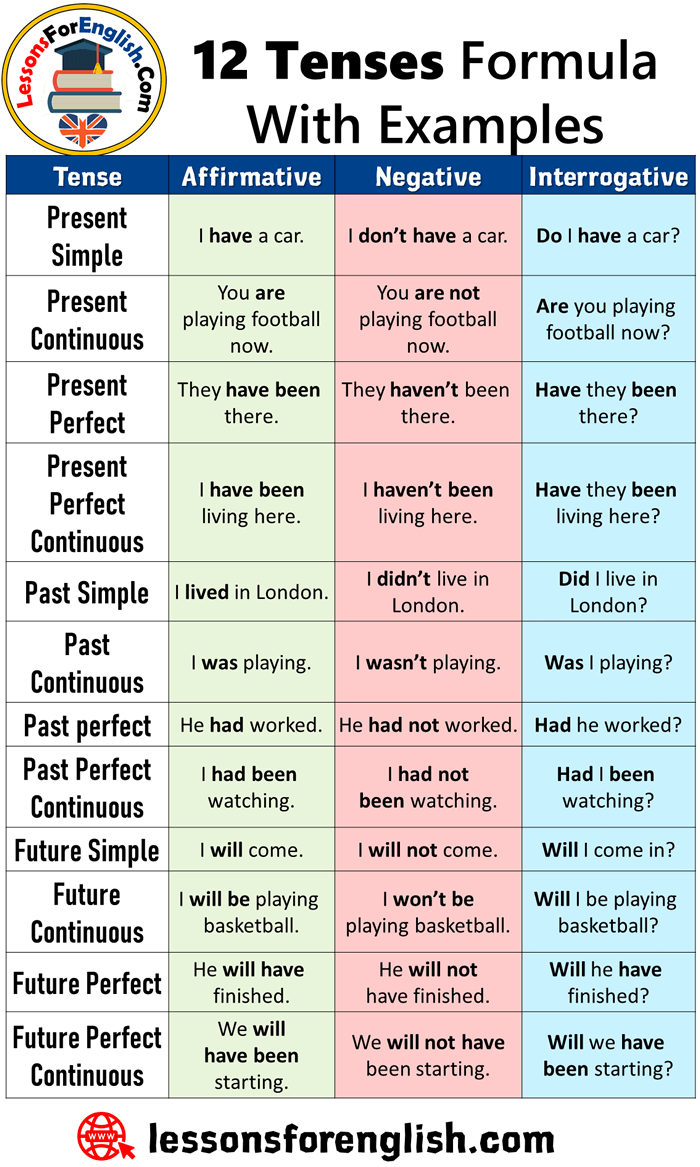Understanding tenses is essential for effective communication in English. Tenses indicate the time of an action or event, and they play a crucial role in conveying the intended message accurately. There are various tenses in English, each serving a specific purpose in expressing actions or events in different time frames.
Mastering tenses can be challenging for English language learners, but with practice and understanding of the formulas and examples, you can improve your grasp of the language and communicate more effectively.
All Tenses Formula with Examples
1. Simple Present Tense: Subject + Verb (base form) + Object
Example: She plays the piano.
2. Present Continuous Tense: Subject + am/is/are + Verb (ing) + Object
Example: They are watching a movie.
3. Simple Past Tense: Subject + Verb (past tense) + Object
Example: He visited Paris last summer.
4. Past Continuous Tense: Subject + was/were + Verb (ing) + Object
Example: We were studying when the power went out.
5. Present Perfect Tense: Subject + has/have + Verb (past participle) + Object
Example: She has finished her homework.
Learning and practicing these tenses will help you improve your English language skills and enhance your communication abilities. Remember to pay attention to the time frame of the action or event and choose the appropriate tense to convey your message accurately.
By familiarizing yourself with the formulas and examples of various tenses, you can build your confidence in using English tenses correctly in both spoken and written communication. Keep practicing and applying these tenses in your daily conversations and writing to become more proficient in the English language.
In conclusion, understanding tenses and their formulas is crucial for effective communication in English. By mastering the different tenses and practicing their usage with examples, you can enhance your language skills and convey your thoughts and ideas more clearly. Keep learning and practicing to improve your proficiency in English grammar and communication.
